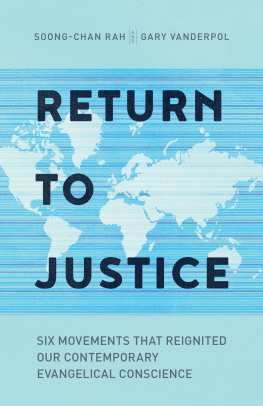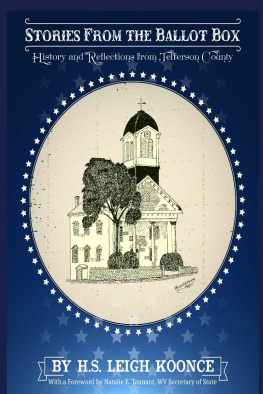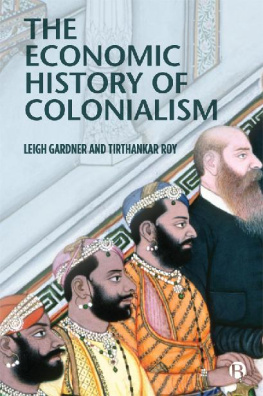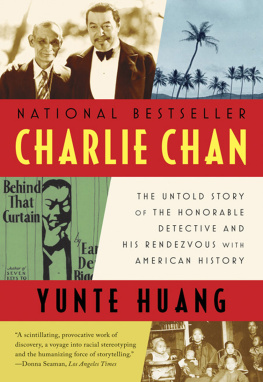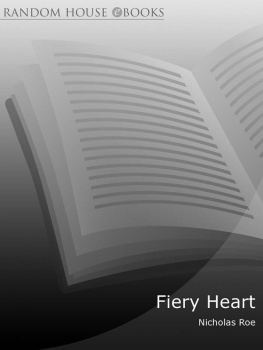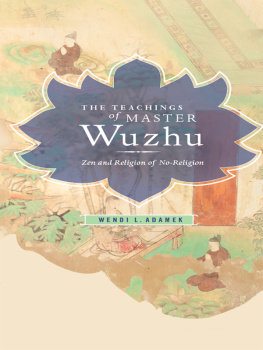The Mystique of Transmission
ON AN EARLY CHAN HISTORY AND ITS CONTEXTS
Columbia University Press
New York
Columbia University Press
Publishers Since 1893
New York Chichester, West Sussex
cup.columbia.edu
Copyright 2007 Columbia University Press
All rights reserved
E-ISBN 978-0-231-51002-8
Columbia University Press and the author express appreciation to Barnard College, the Chiang Ching-kuo Foundation, and University Seminars at Columbia University for subvention grants that assisted in the publication of this book.
Library of Congress Cataloging-in-Publication Data
Adamek, Wendi Leigh.
The Mystique of transmission : on an early Chan history and its contexts / Wendi L. Adamek.
p. cm.
Includes bibliographical references and index.
ISBN 13: 978-0-231-13664-8 (alk. paper) ISBN 13: 978-0-231-51002-8 (e-book)
ISBN 10: 0-231-13664-1 (alk. paper) ISBN 10: 0-231-51002-0 (e-book)
1. Zen Buddhism. I. Title. II. Title: On an early Chan history and its contexts.
BQ9265.4.A33 2006
294.3927dc22
2006026588
A Columbia University Press E-book.
CUP would be pleased to hear about your reading experience with this e-book at .
For the Venerable Wuzhu

Contents
W ORKING ON a long-term project is an excellent exercise in interdependence, as one becomes aware that ones work is composed entirely of gifts and debts. However, this does not mean that one can dispense with the standard caveat: Nothing is mine alone but the mistakes, for which I take full responsibility.
As this is a dissertation-based project, my appreciations extend back to many teachers, mentors, and friends, but for the sake of brevity I will mention only those who contributed directly to this project. I am thankful to have studied, albeit too briefly, with the late Michel Strickmann. To Carl Bielefeldt and Bernard Faure I owe more than I can possibly express. My long graduate career gave me the privilege of getting to know them and their families, and I would also like to thank Dominique Chol-Faure for her warmth, good humor, and good advice. To Bernard I owe the guru-gift, for his work and example have shown me the value of life at the crossroads. I have also been grateful for the fellowship and feedback of fellow students from Stanford and other institutions through the years, especially Helen Baroni, Michael Como, Franco Gatti, David Gardiner, Hank Glassman, Akemi Iwamoto, John Kieschnick, Max Moerman, Elizabeth Morrison, James Robson, and Jonathan Silk. I am especially grateful to Elizabeth Morrison for her careful reading of early drafts of this work.
During my three years of research in Kyoto, I received guidance and assistance from nearly everyone I met, as I was so clearly in need of it. My stay in Kyoto was made possible by the sponsorship of Professor Katsumi Mimaki of Kyoto University, whose erudition, warmth, and humor are a pleasure to recall. I would like to express special thanks to Professor Yanagida Seizan for offering the hospitality of the International Research Institute for Zen Buddhism at Hanazono College, giving me many valuable research materials, and providing the research assistantship that made it possible for me to extend my stay in Japan. Professor Yanagidas seminars, as well as his awe-inspiring published work on early Chan, are part of the foundations of this project. I am also grateful to Professor Koga Hidehiko for allowing me to attend his seminar on the Lidai fabao ji at Hanazono College. Much appreciation is due to Urs App, who during his tenure as Professor Yanagidas assistant at the International Research Institute created many superlative electronic research tools for Chan/Zen scholars. My work also owes a great deal to weekly visits to my tutor Chizuko Inui, whose guidance is behind many Kyoto research projects. As I spent several years occupying a desk at the School of East Asian Studies of the Italian Institute of Kyoto, I cannot adequately express the extent of my gratitude to the former director of the school, the late Antonino Forte, for his generous hospitality and friendship. Dr. Michael Cooper, former editor of Monumenta Nipponica, has contributed many years of pep talks, good cheer, and excellent correspondence. I would also like to convey my respectful thanks to the late Morinaga Soko Rshi of Daish-in temple in Kyoto, Ursula Jarand and Daij Minick of Daish-in West in California, and the Venerable Chongmok of Haein-sa in Korea, for their encouragement and support.
Friends in the field have generously contributed time and energy to help this work along. I am grateful for Koichi Shinoharas helpful feedback during the dissertation stage of this project. Janine Sawada has been a staunch friend and an insightful reader of multiple drafts. My dear friend Anne Dutton helped me track down references when I was far from a library. Frederick Smith has been a loyal companion and champion through the many trials and tribulations of the completion process. Stephen Teiser and John McRae provided deeply appreciated suggestions and corrections for the final drafts of the book. I would also like to thank Barnard College colleagues Celia Deutsch and Dorothy Ko for their camaraderie and advice.
I have benefited greatly from time spent at the Zhongguo gudaishi yanjiu zhongxin (Institute for the Study of Ancient Chinese History) at Peking University, and my grateful thanks go to Professor Rong Xinjiang of the History Department for his hospitality and inspiring scholarship. I am also much indebted to Professor Shen Ruiwen of the Archaeology Department, and to the History Department graduate and postgraduate students Wang Jing, Su Hang, and Ji Aimin, for their generous assistance with this and other research efforts.
I would like to gratefully acknowledge Stanford University, the Foreign Language and Area Studies program, the Fulbright Program, the Bukky Dend Kykai (Society for the Preservation of Buddhism), the Jacob K. Javits Foundation, the University of Iowa, the Chiang Ching-kuo Foundation, and Barnard College, for the fellowships and grants that made this project possible. The editors at Columbia University Press and I would like to express our appreciation to Barnard College, the Chiang Ching-kuo Foundation, and University Seminars at Columbia University for generous subvention grants. Portions of this book were presented to the University Seminar on Buddhist Studies, and I benefited greatly from discussions of my work with colleagues at Barnard and at the Buddhist Studies Seminar. I extend grateful thanks to Wendy Lochner and the editors at Columbia University Press, and I would also like to acknowledge helpful editorial feedback received in the process of publishing portions of this work in History of Religions ( 2000 by The University of Chicago. All rights reserved), Chan Buddhism in Ritual Context, edited by Bernard Faure (2003), and The Zen Canon, edited by Steven Heine and Dale S. Wright (2004).
To all my relatives and closest friendswithout you this work could never have come into being or made its way to completion, me ke aloha pumehana. I especially thank Margery Strass for her care and support in providing a quiet haven during the dissertation-writing stage, and Cynthia King for her excellent good sense and humor. And finally, much love and aloha to my brother, Brad Fitkin, and my sister, Lisa Fitkin, and their families, and to my mother and stepfather, Janet and George Allan, for their unfailing patience and wisdom.








